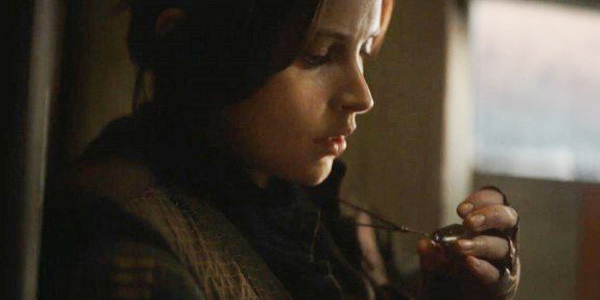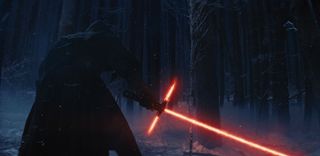What Are Kyber Crystals, And Why Are They Important To Star Wars?

Movie audiences have been fascinated by the lightsabers in Star Wars going all the way back to 1977 -- but the films have never really addressed exactly how they work. The answer lies within the mysterious Kyber Crystals -- and while this has been addressed in television shows, novels, and a wide-variety of non-canon material, they've never been mentioned by name on the big screen. That changes in a big way with Gareth Edwards' Rogue One: A Star Wars Story, however, so we figured now is probably the best time to provide some education about the valuable and rare element in the sci-fi saga.
(Note: For the purposes of clarity, this article will be focus exclusively on what is now deemed canon within the Star Wars universe. Information about Kyber Crystals from the non-canon "Legends" can be found here).
While we'll get to their involvement in Rogue One in a bit, it's best to start by talking about the most significant way Kyber Crystals have been present in the Star Wars universe. First examined in the Clone Wars Season 5 episode "The Gathering," and first identified by name in the episode "A Test Of Strength," Kyber Crystals are not just the key component in a lightsaber, but are also an important part of an step in a youngling's path to become a Jedi. When building their own weapons, the force-sensitive children are sent to the Crystal Caves of the planet Ilum where they are to harvest crystals that they will use to construct their own lightsabers. This is a Force-guided process, where the younglings are drawn to their own specific crystals.
Obviously this means that every lightsaber audiences have seen in the Star Wars universe contains a Kyber Crystal -- but one specific blade that's worth mentioning in this discussion is the one wielded by Adam Driver's Kylo Ren in Star Wars: The Force Awakens. While it's not actually explained in the film, the crystal in Ben Solo's weapon is different than all others because it's actually cracked -- which is why it requires ventilation giving it the crossguard appearance.

On beyond their necessity in the construction of a lightsaber, Kyber Crystals are not exactly normal minerals by themselves. The way in which they are attuned to the Force almost makes them sentient beings, and their individual wills actually need to be corrupted in order to be used by a Sith lord (this is signified by their lightsabers being red). According to what's established in Rogue One, the crystals are not just found in caves, but also in the hearts of powerful suns (a bit of trivia provided by Donnie Yen's Chirrut Imwe).
That provides a perfect segue into the use of Kyber Crystals in Rogue One, because there really isn't much lightsaber action in the new blockbuster. Instead, the Force-sensitive crystals are employed in a different way: a universal power source used to power not just Imperial tanks and machinery, but also the Death Star. In fact, it is because of his research into Kyber Crystals that Galen Erso (Mads Mikkelson) is seen as an invaluable resource in the construction of the planet killer and held hostage by Orson Krennic (Ben Mendelsohn).
Within the Star Wars canon, introducing the idea that the Death Star is powered by Kyber Crystals is actually an incredibly smart play. More than just the fact that it's been questioned how much power it would take to run a space station of that size, the incredible destruction of the beam that the Death Star fires makes complete sense when explained as being part of the same energy lightsabers use. Even more interesting, it's been theorized by fans that the Starkiller Base in The Force Awakens is actually the aforementioned planet Ilum that has been transformed into a weapon -- and given the station's power, that actually makes a whole lot of sense. It's another one of the ways that Rogue One actuallyimproves Star Wars as a whole.
CINEMABLEND NEWSLETTER
Your Daily Blend of Entertainment News
Because of their association with the Jedi, Kyber Crystals will surely continue to play an incredibly important part of the Star Wars universe for many years to come -- but the big question that remains is exactly how much presence they will actually have. Will Rogue One open the door for them to be mentioned constantly in Rian Johnson's Star Wars: Episode VIII and beyond, or will they remain relegated as an "interesting detail" of the sci-fi world? Regardless, you now know everything that you need to know!

Eric Eisenberg is the Assistant Managing Editor at CinemaBlend. After graduating Boston University and earning a bachelor’s degree in journalism, he took a part-time job as a staff writer for CinemaBlend, and after six months was offered the opportunity to move to Los Angeles and take on a newly created West Coast Editor position. Over a decade later, he's continuing to advance his interests and expertise. In addition to conducting filmmaker interviews and contributing to the news and feature content of the site, Eric also oversees the Movie Reviews section, writes the the weekend box office report (published Sundays), and is the site's resident Stephen King expert. He has two King-related columns.
Most Popular






